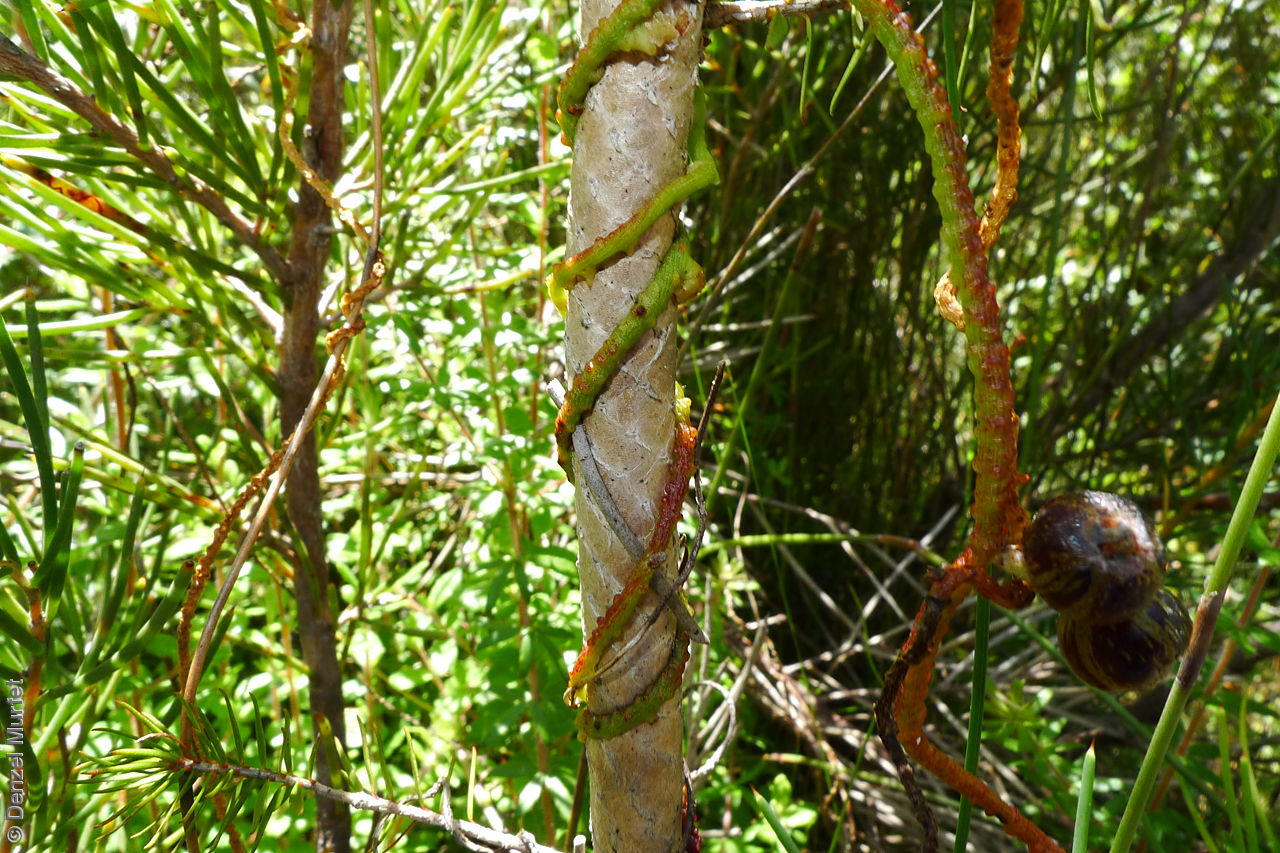
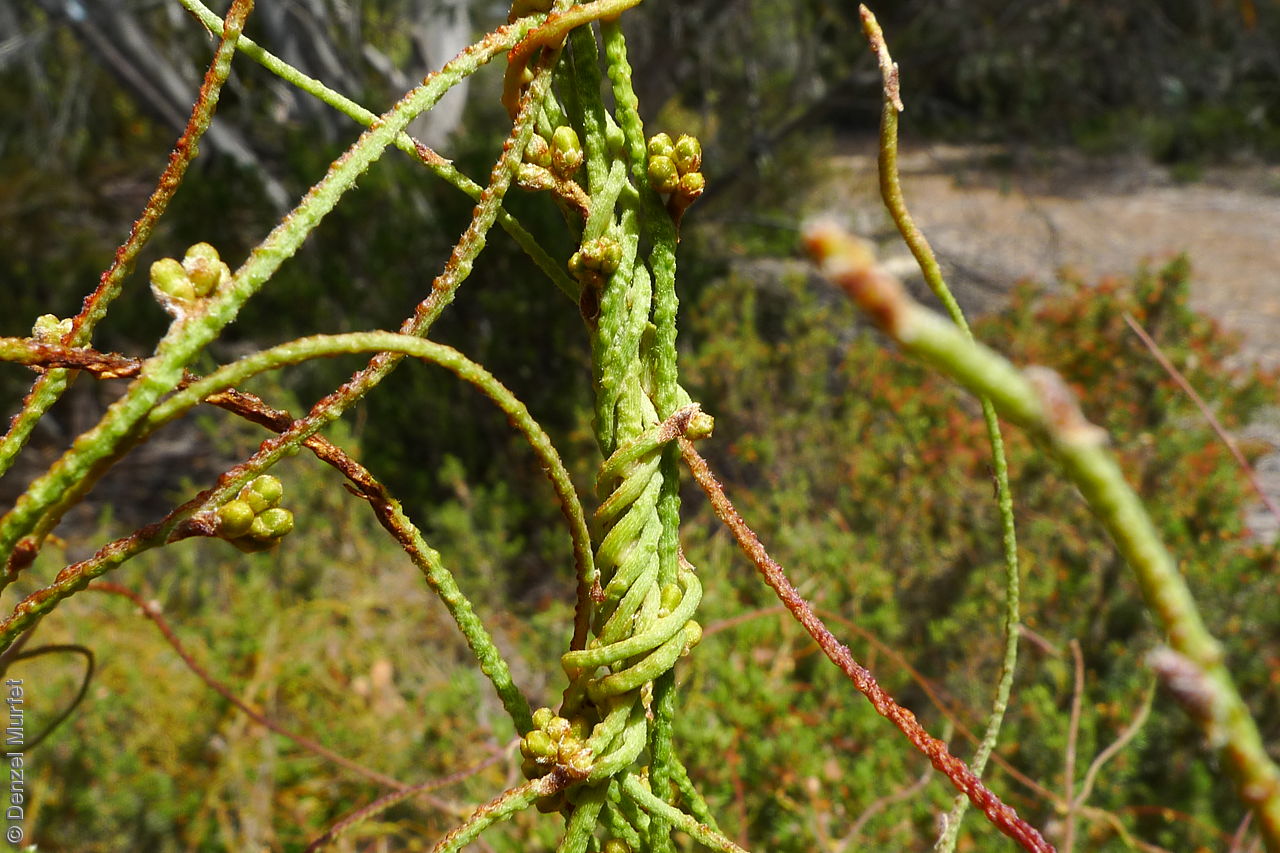
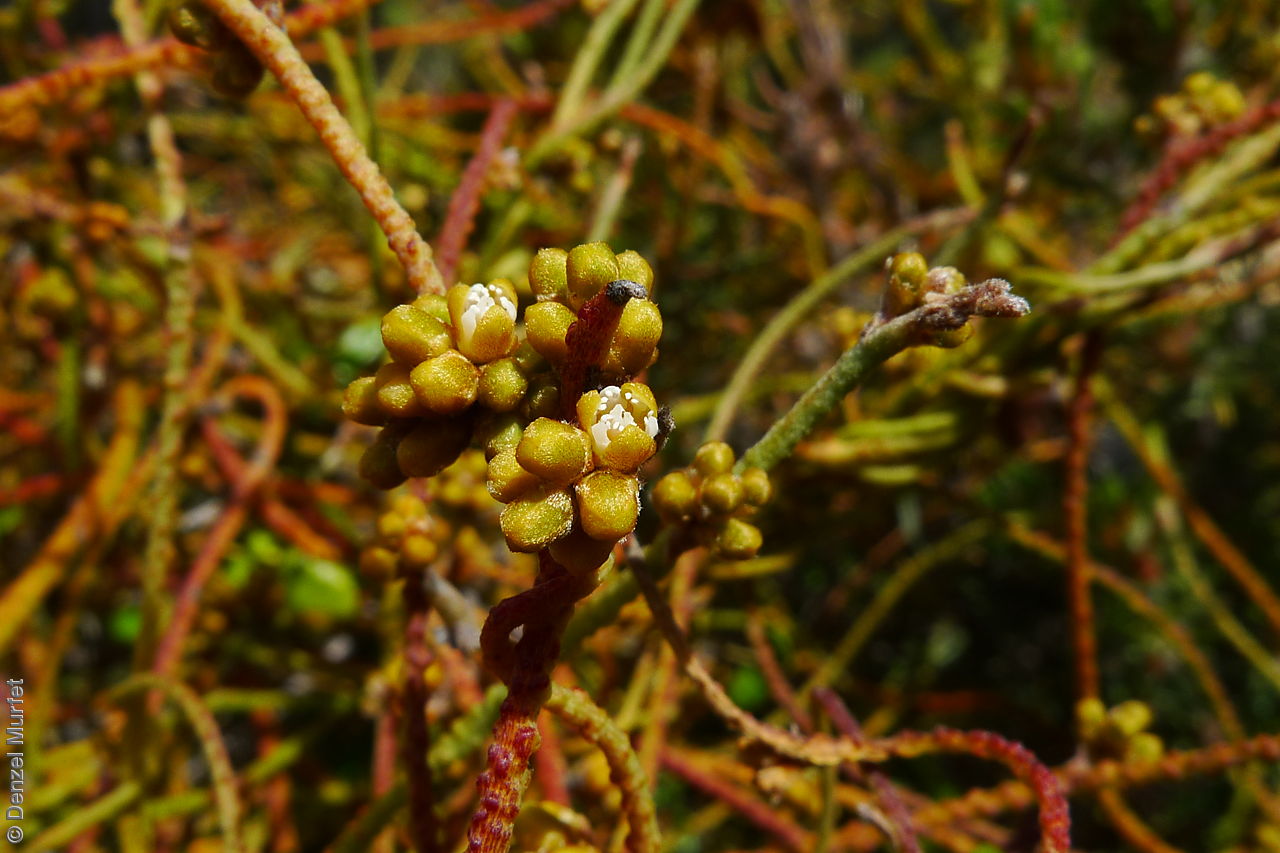
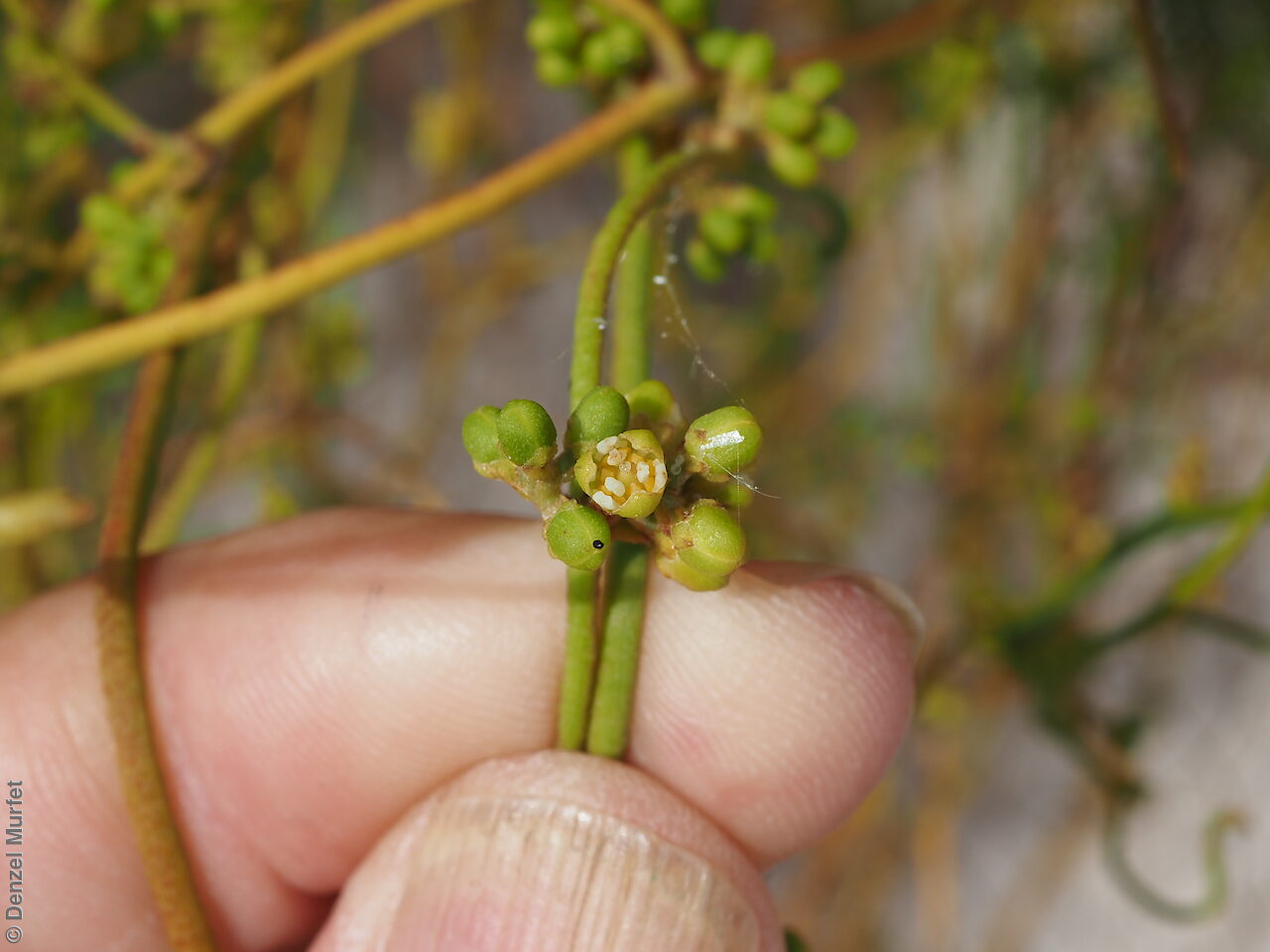
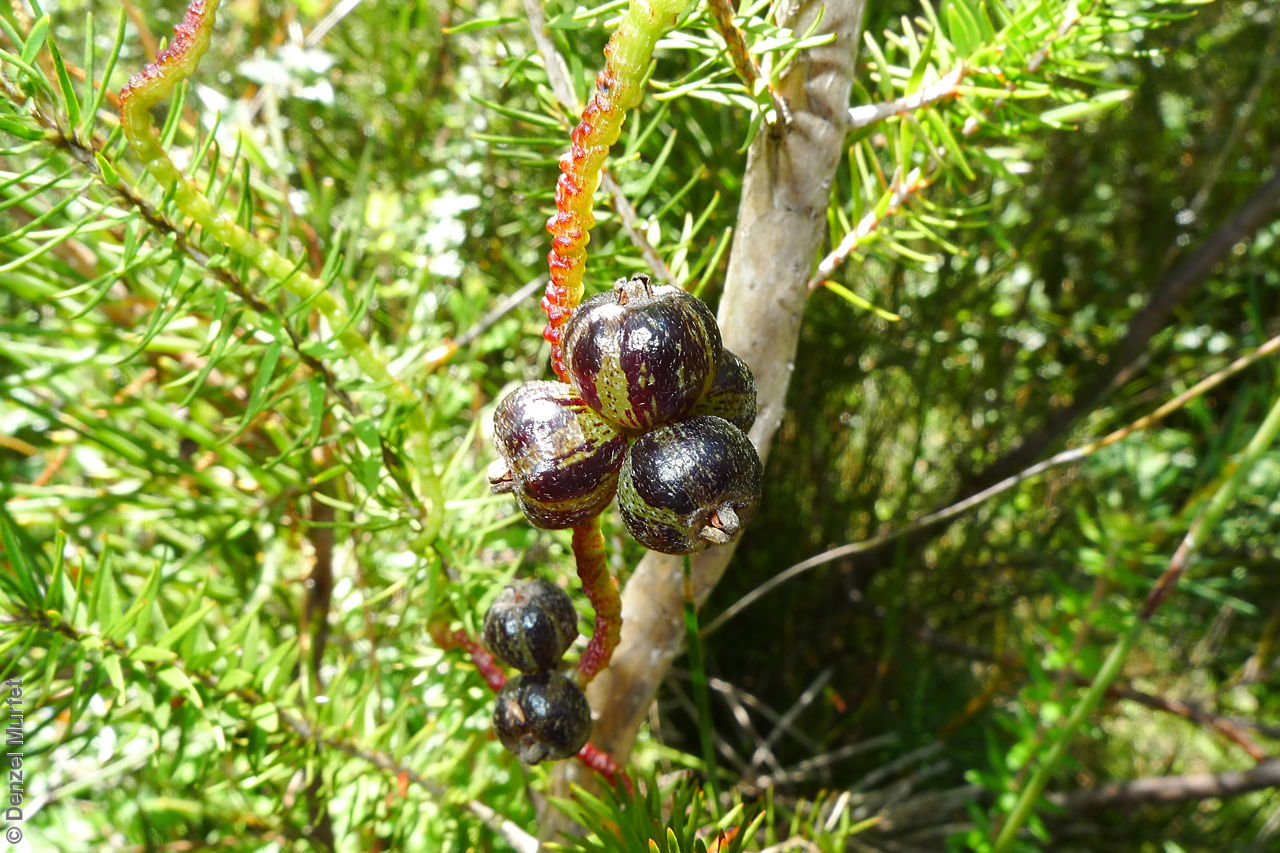
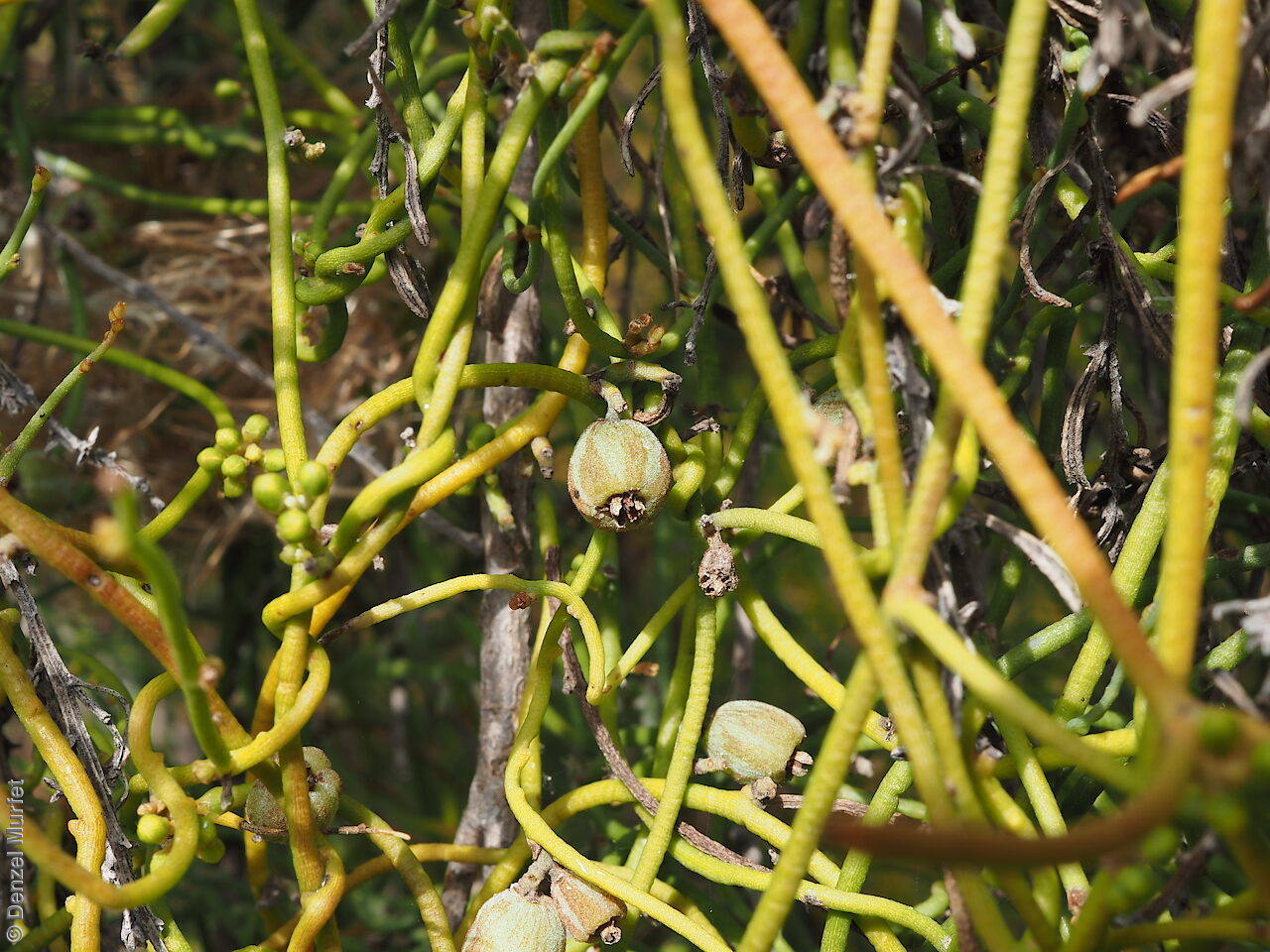

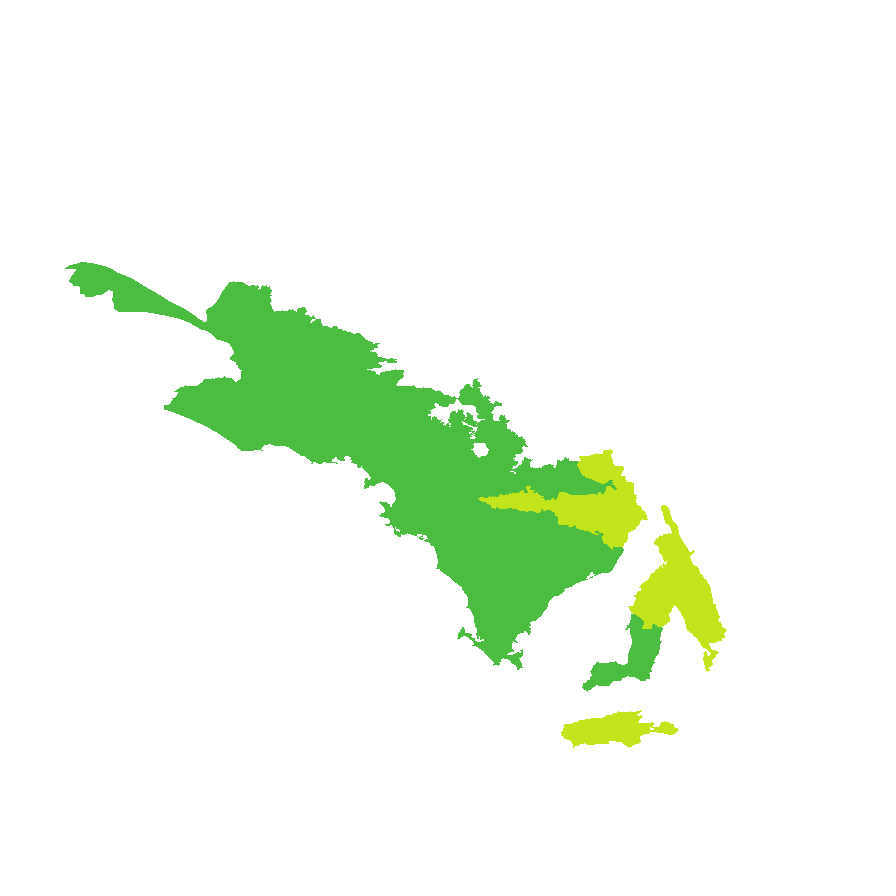
Botanical art
Prior names
Cassytha peninsularis var. peninsularis
Common names
Streaked Dodder-laurel
Peninsula Dodder-laurel
Etymology
Cassytha from the Greek 'kasytas' or 'kadytas', a name for a parasite to which this genus bears a strong resemblance and thought to have been dodder (genus Cuscuta). Peninsularis from the Latin 'peninsula' meaning a narrow body of land, referring to the species occurring on Eyre and Yorke Peninsulas.
Distribution and status
Endemic to South Australia and found on Eyre and Yorke Peninsulas and Kangaroo Island. Native. Common in South Australia.
Herbarium regions: Eyre Peninsula, Northern Lofty, Yorke Peninsula, Kangaroo Island
AVH map: SA distribution map (external link)
Plant description
Parasitic perennial twiner with stem to 2.5 mm thick; glabrescent, rarely rugulose; yellow-green, green to green-red. Leaves reduced, ovate, to 2 mm long and 1 mm wide; scattered hairs, often with a central gland. Inflorescence a panicle with 1–5 yellow flowers; sepals triangular, mostly glabrous, yellow; in fruit, light-brown; petals ovate, glabrous or rarely with few scatterered hairs outside; yellow, in fruit dark brown. Flowering between October and February. Fruits are green and red banded, globular fleshy fruit to 7 mm long and 6.5 mm wide; pubescent, broadly banded with dull-green and dull red-brown hairs. Seeds are globular woody seed. Seed embryo type is linear under-developed.
Seed collection and propagation
Collect seeds between October and April. Collecting mature fruits, those that are soft, green-red and have a hard woody seed inside. Place the fruits in a bucket of water and rub with your hands to remove the soft flesh. Remove any seeds that are floating. These will be empty seeds. Drain the water and keep only the hard seeds at the bottom. Place the seeds on paper towel and leave to dry. Store the seeds with a desiccant such as dried silica beads or dry rice, in an air tight container in a cool and dry place.